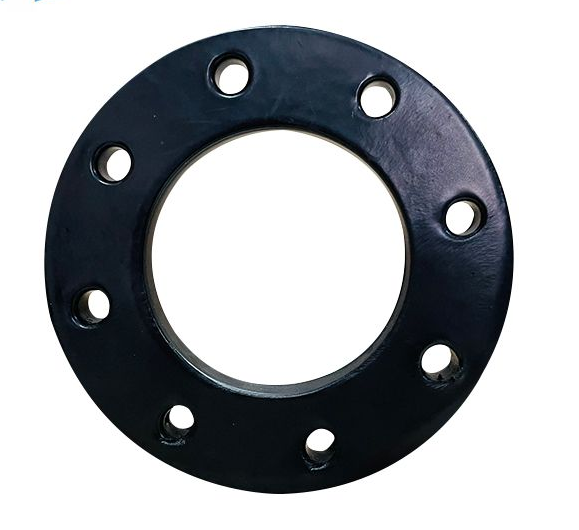-
Cangzhou Yulong Steel Co., Ltd.
-
Phone:
+86 13303177267 -
Email:
admin@ylsteelfittings.com
- English
- Arabic
- Italian
- Spanish
- Portuguese
- German
- kazakh
- Persian
- Greek
- French
- Russian
- Polish
- Thai
- Indonesian
- Vietnamese
- Zulu
- Korean
- Uzbek
- Hindi
- Serbian
- Malay
- Ukrainian
- Gujarati
- Haitian Creole
- hausa
- hawaiian
- Hebrew
- Miao
- Hungarian
- Icelandic
- igbo
- irish
- Japanese
- Javanese
- Kannada
- Khmer
- Rwandese
- Afrikaans
- Albanian
- Amharic
- Armenian
- Azerbaijani
- Basque
- Belarusian
- Bengali
- Bosnian
- Bulgarian
- Catalan
- Cebuano
- China
- China (Taiwan)
- Corsican
- Croatian
- Czech
- Danish
- Esperanto
- Estonian
- Finnish
- Frisian
- Galician
- Georgian
- Kurdish
- Kyrgyz
- Lao
- Latin
- Latvian
- Lithuanian
- Luxembourgish
- Macedonian
- Malgashi
- Malayalam
- Maltese
- Maori
- Marathi
- Mongolian
- Myanmar
- Nepali
- Norwegian
- Norwegian
- Occitan
- Pashto
- Dutch
- Punjabi
- Romanian
- Samoan
- Scottish Gaelic
- Sesotho
- Shona
- Sindhi
- Sinhala
- Slovak
- Slovenian
- Somali
- Sundanese
- Swahili
- Swedish
- Tagalog
- Tajik
- Tamil
- Tatar
- Telugu
- Turkish
- Turkmen
- Urdu
- Uighur
- Welsh
- Bantu
- Yiddish
- Yoruba

Dec . 04, 2024 15:00 Back to list
Exploring Various Types of Pipe Flanges and Their Applications in Piping Systems
Different Types of Pipe Flanges A Comprehensive Guide
Pipe flanges are essential components in piping systems, utilized to join two sections of pipe, to connect pipes to other equipment, or to facilitate the installation of valves. Understanding the various types of pipe flanges is crucial for selection, installation, and maintenance in any piping assembly. This article explores the different types of pipe flanges, their applications, and their characteristics.
1. Weld Neck Flanges
Weld neck flanges are characterized by their long neck that gradually rises into the flange ring. This design makes them an excellent choice for high-pressure and high-temperature applications. The long neck helps to distribute stress evenly and allows for a stronger weld connection. They are typically used in industries where durability and reliability are paramount, such as oil and gas, chemical processing, and power generation.
2. Slip-On Flanges
Slip-on flanges are designed to slide over the end of the pipe and are welded in place both inside and outside. This type of flange is easy to align and install, which makes it a popular choice for many applications. Slip-on flanges can be used for low-pressure systems and are commonly employed in various industries, including water treatment and sewage systems. However, they are less effective in high-stress applications compared to weld neck flanges.
Blind flanges are solid flanges with no bore, used to seal the end of a piping system or to create a dead end in a pipeline. They are essential in maintenance processes, allowing for easy isolation of sections of pipe for service. Blind flanges are available in various sizes and materials, and they are particularly useful in high-pressure applications due to their strength and durability.
4. Threaded Flanges
different types of pipe flanges

Threaded flanges have internal threads that allow them to be screwed onto the end of a pipe. They are particularly beneficial in applications where welding is not feasible, such as in locations where welding could be hazardous or impractical. Threaded flanges can be made from various materials, including steel and plastic, and are often used in oil and gas, water systems, and chemical industries. However, they are generally not suitable for high-pressure systems, as the threads can be compromised over time.
5. Socket Weld Flanges
Socket weld flanges are similar to slip-on flanges but are designed for welding the pipe into the flange. The pipe is inserted into a socket in the flange, facilitating a stronger and more secure connection. Socket weld flanges are typically used in high-pressure applications and are favored in the chemical and oil industries due to their robustness and reliability.
6. Lap Joint Flanges
Lap joint flanges are used in conjunction with a stub end, allowing for easy disassembly and reassembly. They are particularly useful in applications where frequent maintenance is necessary. The design of lap joint flanges allows for flexibility in alignment, making them ideal for applications involving misaligned pipes or where piping connections may need to be adjusted later.
7. Raised Face Flanges
Raised face flanges feature a small raised area around the center, which increases the gasket’s contact area when bolted to another flange. This design enhances the sealing ability and is commonly used in various industrial applications, including refineries and chemical plants. Raised face flanges are available in different pressure ratings, making them suitable for both low and high-pressure systems.
Conclusion
Choosing the right type of pipe flange is critical for ensuring the integrity and efficiency of a piping system. Each type of flange offers unique benefits and is suited for specific applications. Factors such as pressure, temperature, and the nature of the substance being transported should be carefully considered in the selection process. Understanding the different types of pipe flanges helps engineers and technicians make informed decisions, leading to safer and more effective piping installations. Whether in industrial settings or residential plumbing, the right flange can significantly impact the performance and longevity of piping systems.
Latest news
-
ANSI 150P SS304 SO FLANGE
NewsFeb.14,2025
-
ASTM A333GR6 STEEL PIPE
NewsJan.20,2025
-
ANSI B16.5 WELDING NECK FLANGE
NewsJan.15,2026
-
ANSI B16.5 SLIP-ON FLANGE
NewsApr.19,2024
-
SABS 1123 FLANGE
NewsJan.15,2025
-
DIN86044 PLATE FLANGE
NewsApr.19,2024
-
DIN2527 BLIND FLANGE
NewsApr.12,2024
-
JIS B2311 Butt-Welding Fittings LR/SR 45°/90° /180°Seamless/Weld
NewsApr.23,2024











